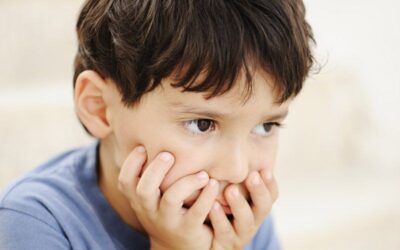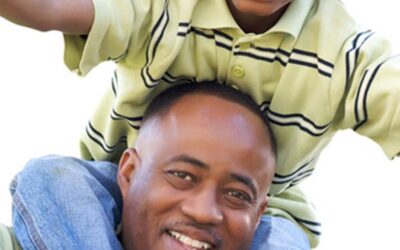
Children with autism may have difficulties with wearing a facemask for a variety of reasons. Many families may wonder: Why does my child with autism have difficulty wearing a facemask? Or Why does my child constantly take off their facemask? Here are some reasons a child with autism or related disorders may dislike wearing a mask:
1. The material may feel like it is scratching their face.
2. The facemask may make the child feel restrained.
3. The facemask may make the child have more difficulty communicating basic needs, and therefore, increase frustration.
4. The facemask may make the child feel warmer or hot due to their breathing within the cloth of the mask.
5. The child may feel uneasy due to it being something new.
6. The child may feel irritation if they have difficulty scratching itches.
7. The facemask may be too tight behind the ears, and the child does not have the communication skills to inform others.
8. The facemask may be too loose, and the slipping of the mask may irritate the face.
9. They may not understand the need for the mask, and therefore may not be as motivated to keep the mask on.
Addressing your child’s Mask disdain in a comfortable and safe manner
There are a few ways we can address these difficulties that children have with wearing a facemask. Parents may wonder: How can I get my child to wear a mask? Or How can I help my child to wear their mask for longer times? Here are a few suggestions that may help with getting a child to wear a mask:
1. Reinforce the child for wearing the mask for shorter periods of time and work up to longer periods of time.
2. Try other materials, softer masks, or medical grade masks that are lighter and not made of cloth.
3. Find materials that don’t make the child feel overheated.
4. Show the child a timer for a specific amount of time they will need to wear the mask.
5. Start out with small periods of time with the mask.
6. Teach the child to communicate while wearing the mask to ensure their communication is not hindered.
7. Teach the child how to manage the mask and adjust the mask for themselves, so that it feels better on their face.
8. Teach the child to communicate if the mask fits too loosely or too tightly.
9. Use a plastic insert that makes the facemask extend away from the face.
10. Ensure the child’s mask is the right size and does not fit loosely enough or too tightly to irrigate their face.
11. Teach the child why masks are worn and how they will help prevent being ill. Explain how being ill is not fun and how the mask might not be fun, but being sick would be even less fun.
12. Be realistic about your goals for your child – Make sure that you start small and do not expect the child to begin wearing the mask for long periods of time immediately.
13. Make the reinforcement worth it – make sure that you identify reinforcement that is very motivating – enough that the child is willing to wear the mask for that reinforcement.
14. Follow through on your promises of reinforcement – be consistent about providing that reinforcement.
15. Talk with our ABA supervisors to create a tailored ABA program goal using your child’s preferences, behaviors, and skills. Our BCBAs are able to create a child-specific plan that uses the highly effective science of ABA.
Sensory Friendly Masks: Alternatives for the stubborn mask-wearer
There are also wonderful alternatives to face masks like sensory friendly masks that you can try if your child really would rather avoid the facemask.
- Wrap-around Mask: Sensory-friendly masks for youth that wrap around the head and Velcro at the back of the neck are comfortable and adjustable for all!
- Neck Elastic Mask: Similarly, adjustable handmade masks with Velcro closures that are ideal for wearers with varying disabilities.
- Sensory-Friendly Protective Mask: This kind of reusable mask ,does not tug on the ears and has an easy-to-adjust sizing toggle. Plus, it’s reversible and includes a convenient name tag to label. You can find this at autism-products.com.
- Clear Face Shield: This easy-to-wear option is worn similarly to glasses with a comfortable nose bridge. It is light-weight, unscented and highly-breathable. Best yet, this unique style is optimal for American Sign Language (ASL) communicators and others.
- Sensory-Friendly Clasp Mask: Available in both youth and adult sizes, this hypoallergenic sensory-friendly mask has a soft silk liner and adjustable jersey knit straps that comfortably wrap and clasp around the head.
- Soft & Stretchy Loop: Available in many designs and colors, this 2-layer mask is hand-cut and hand-sewn. The comfy and creative design presents a stretchy loop without elastic.
- Headband-Like Mask: This cute homemade pleated mask ties at the top of the head, kind of like how one would tie a bandana as a headband or a hair bow. The mask includes a 4-inch nose wire that can be molded not just over your nose, but across your cheeks which can be helpful for combating fog among glasses wearers.
Our team of experienced ABA therapists is able to create an individualized plan for wearing masks as a part of the ABA program goals. Acuity Behavior Solutions staff can also review additional ways you can help to ensure your child makes improvements through ABA therapy. If you have any questions about starting ABA, please feel free to give us a call at (714) 696-2862.
Contact No:
Related Articles
What is Autism?
What is Autism Spectrum Disorder? Autism Spectrum Disorder sometimes referred to as ASD, is a neurological disorder that affects 1 out of every 68 children, depending on the study conducted.A diagnosis of Autism Spectrum Disorder now includes several disorders that...
How to Talk To Your Child After a Tantrum (Or Any Other Inappropriate Behavior)
A child with Autism may act differently than other children, and other children sometimes don’t know how to react. It’s important to teach autism awareness and acceptance to children who don’t have autism. Brothers and sisters, as well as friends and classmates, of a...
5 Wonderful Tips for a Successful Playdate
Playdates are great for kids! Especially those that may have a hard time socializing with a lot of people at school. Here are 5 tips for parents to help your child have a successful playdate! 1. Plan a date and time that works for everyone. Choose a time when...





